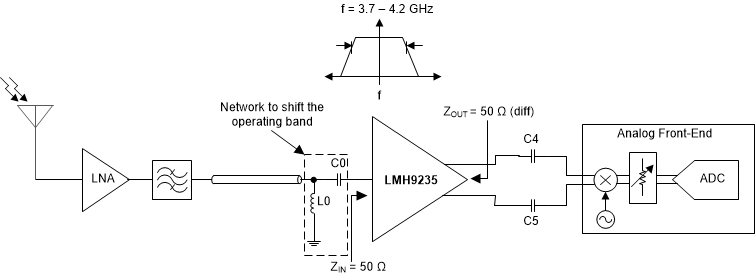SBOS996C May 2020 – May 2021 LMH9235
PRODUCTION DATA
- 1 Features
- 2 Applications
- 3 Description
- 4 Revision History
- 5 Pin Configuration and Functions
- 6 Specifications
- 7 Detailed Description
- 8 Application and Implementation
- 9 Power Supply Recommendations
- 10Layout
- 11Device and Documentation Support
- 12Mechanical, Packaging, and Orderable Information
Package Options
Mechanical Data (Package|Pins)
- RRL|12
Thermal pad, mechanical data (Package|Pins)
Orderable Information
8.2.2 Shifting the Operating Band
It is possible to tune the frequency band of operation of this chip by a simple external network at the input as shown in Figure 8-1. In this example, with the help of 2 components at the input, the frequency band is shifted to 3.7 - 4.2 GHz.
 Figure 8-5 Shifting the Operating Band
Figure 8-5 Shifting the Operating Band